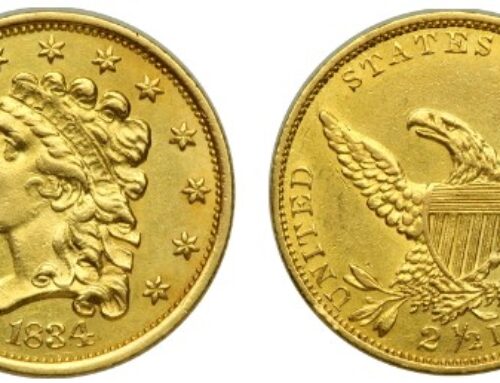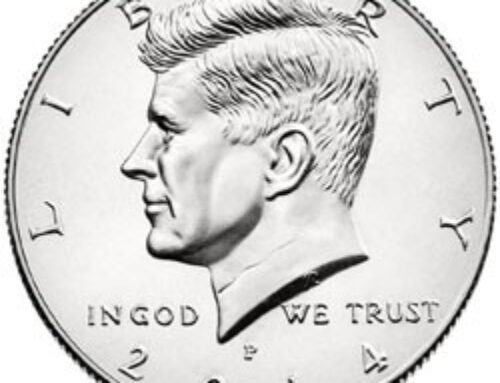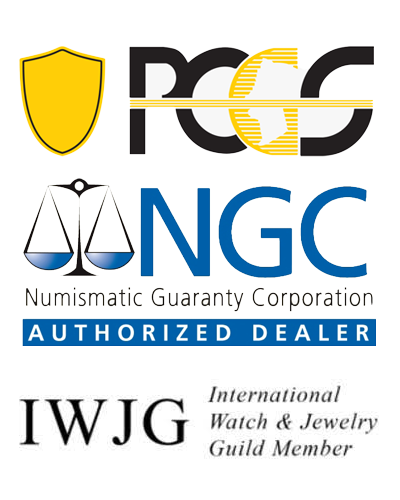The average person here might say that a definition of “money” could be “U.S. coins and paper currency that can be exchanged for items of value”.
Earlier, shells and cigarettes were used as money. Two thousand years ago, a Roman soldier was paid in salt—SAL in Latin, but only if he was “worth his salt”. Today we have the word “SALary”.
Most of us think of money as limited to coins and paper currency issued by a government. That, of course, excludes any “money” used in a board game such as Monopoly, as well as most foreign currency.
When the average person thinks of “coins,” they are thin and round objects ready to spend. Many foreign coins, even today, have holes, deliberately made during the minting process. Others are square or oblong. Sometimes it is difficult to identify the country that produced such odd coins.
Some new coins are made of multiple, or exotic, metals to discourage counterfeiters.
Medals and tokens, often thin and round, are sometimes confused with coins. Any real coin will always have a date, a denomination (such as 25 cents or “quarter”), and be issued by a government.
The first batch of the U.S. nickels of 1883 had the Roman numeral “V” on their reverse, to indicate “five”. Some crooks gold plated these “racketeer nickels,” and passed them off as $5.00 gold pieces.
Often an old coin may be ugly with wear, and even have dirt or corrosion. NEVER clean any coin. That would destroy most of its value.
Most U.S. coins today are minted in Philadelphia, Denver, San Francisco and West Point New York. These usually have small letters called “mint marks,” like “P”, “D”, “S”, and “W”, or Philadelphia, Denver, San Francisco and West Point, New York.
During the 1800s and early 1900s, smaller quantities of our nation’s coins were also minted in Dahlonega, Georgia; Carson City, Nevada; Charlotte, North Carolina; and New Orleans, Louisiana. The mint marks on these coins are “D”, “CC”, “C” and “O”.
The majority of our billions of coins have no mint mark. This means that it was minted in Philadelphia.
During 1942, ’43, ’44 and ‘45, silver was used instead of nickel in our five cent coins. This happened because there was a shortage of nickel needed for the war effort.
These “silver (war time) nickels,” now are worth about fifty cents for their silver, and can be identified by a large P, D, or S mint marks found over the Monticello-building dome on the reverse side.
Another surprise is that our nation’s five cent coins were called “half disme” and were made of silver. Later the spelling was changed to “half dime”.
The condition of any coin is usually much more important that the metal, year or mint mark. Coins can be “graded” to indicate their “wear,” if any. Those that have no wear are called “mint state” —the same state as when they left the mint. Coins with even the slightest wear are described as “circulated”.
Some U.S. coins have little difference in value between grades. For other coins a superb mint-state coin can be worth a hundred or a thousand times more than a heavily circulated specimen.
The paper money we use has changed little during the last eighty-five years. Before 1928, all of our bills were considerably larger than those we now use. For those who remember them, they were about the size of “IBM” cards.
Now, our bills are printed by order of the Federal Reserve. During the nineteenth century, states allowed banks to print their own bills. When such banks “went broke,” the currency became worthless. Now, such bills, called “broken bank notes, are sought-after collector items.
People expect their new coins and bills to have no flaws. Because of the many billions of coins and bills made, there are occasional errors.
Examples are coins made of the wrong metal, or with double designs. At few times, the government mistakenly released “double-denomination” notes, such as a bill with $5.00 on the back and $10.00 on the front. Since the back of a bill is printed first, this bill would be considered a $5.00 note, but could be worth “thousands”.
Mistakes in serial numbers are the most common errors. The greater the error, and the fewer that exist, the higher the value will be.
“Foreign” bills and coins typically have little value, unless made of a “precious metal” such as gold, silver or platinum. The age or beauty of a bill or coin has nothing to do with its value.
As a general rule, when you find coins and currency, you should visit an experienced dealer to find out the values. Such dealers have catalogs that indicate types and values, and a buy-offer can usually be determined in a minute or two. For some coins, the dealer may need a few days of research to determine a value, especially for foreign and ancient coins.








